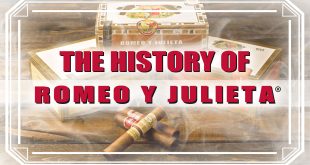Montecristo Cigars History Revealed
From the Montecristo White Label to the Montecristo 1935 Anniversary NicaraguaMontecristo is one of the world’s most celebrated premium cigar brands But how did it get there? How much do you really know about this storied brand? Here, Smoke Inn takes a deep dive into Montecristo’s past and its heritage. In part two of this series, we’ll take a tour of Montecristo Cigars offerings today and where they may be headed in the future. But first, we honor the history of Montecristo Cigars.
Montecristo Cigars are Born
Our story begins in Cuba in 1935 when Alonzo Menendez bought the Particulares Cigar brand. Assuming control, his goal was to reinvent the company, but first it needed a new name. If you’re as into cigar history as we are, you may know that several great legacy cigar brands take their names from classic literature. Romeo y Julieta, Sancho Panza and, of course, Montecristo. Traditionally, lectores would read books aloud to the torcedores as they rolled cigars in cigar factories in Cuba. The workers in these factories might hear a favorite novel read to them a dozen times over the years. They became very familiar with the great works and were enamored with the characters and the principles of the stories. So, it was the most natural thing in the world to name a cigar or a cigar brand after one of the beloved stories read by the lectores. Alonzo Menendez was inspired by the classic novel, The Count of Monte Cristo’ written in 1845, which was very popular in many Cuban cigar factories. So he merged Monte Cristo into one word and the brand was born.
A Younger Legacy Cigar Brand
It didn’t take long before Montecristo Cigars established a reputation for quality in its home country and abroad. Most Cuban heritage brands begin their story in the 1800s, but the Montecristo Cigars story did not begin until the 1930s. That doesn’t diminish their impact on the cigar world one bit, however. The Montecristo No. 2 is probably the cigar they are best known for and it’s inarguably one of the greatest cigars ever made. Few would disagree. If you’re new to cigars, or just to Montecristo’s, sampling the Montecristo No. 2 is a great way to whet your appetite. Despite being younger than most legacy brands, Montecristo Cigars has a pretty interesting history.
A Family Brand Tested by Revolution
When the Cuban Revolution unfolded between 1953-59, Cuba’s most important industry was caught in the middle. The new Castro government was eager to nationalize Cuba’s cigar industry, including Montecristo Cigars, naturally. The political instability at the time created something of a crisis for the Cuban cigar producers. Some ended up shutting down or folding eventually.
Many were taken over by the Castro regime. Others fled for greener pastures. One odd phenomenon which occurred was the splitting of some of the famous legacy brands. This most often happened when the brand founders fled Cuba and set up shop in one of a few prime locations outside of Castros reach to begin again. The Dominican Republic was the most common destination, but Nicaragua was also popular. Some fled to South Florida for a time.
From Montecristo to Montecruz
Like many others, Alonzo Menendez, fled Cuba with his family when Montecristo Cigars was finally nationalized in 1960. He first tried Spain’s Canary Islands, but ironically found himself competing head-to-head with his own brand, the Montecristo Cigars now run by the Cuban government. Undaunted, Alonzo’s son Benjamin, reinvented the brand as “Montecruz”. He discovered the savory Cameroon wrapper was a more than satisfactory stand-in for the Habana wrappers he had relied upon before. Once again, the quality stood out and Montecruz soon recaptured the hearts of fands of Montecristo Cigars in the U.S. through the 1960s.
A New Home for the Montecristo Cigar
In 1972, the Menendez family saw an opening to take back in a successful lawsuit (Menendez v. Faber, Coe and Gregg) which restored the rights of exiled Cuban cigarmakers to use their original brand names. The factory was moved to The Dominican Republic, where other Cuban émigré’s had put down roots and were creating a new premium cigar paradise in the Caribbean. From there, they were able to take back the name Montecristo and sell directly to the U.S. where the Cuban embargo forbid the Cuban government’s Montecristo cigars. The Cuban Montecristo continued to thrive and sell to markets outside of the U.S. of course, but the Dominican version could hold its own against it. The Montecristo cigars we enjoy in the U.S. today are still made in the La Romana factory established by the Menendez family against all odds.
Smoke Inn is Your Cigar Shop
We hope you enjoyed our breakdown of the history of Montecristo Cigars. In next week’s blog, we’ll dive into the brand as it exists today and explore some of our favorite cigars from Montecristo. We’ll also have some recap coverage of this year’s The Great Smoke event coming soon. As always, if you’re local or happen to be visiting South Florida, be sure to reward yourself with a visit to one of the country’s best cigar shops in person. We’d love to see you.
Our South Florida Locations:
- Smoke Inn Palm Beach Gardens
- Smoke Inn West Palm Beach
- Smoke Inn Delray Beach
- Smoke Inn Boynton Beach
- Smoke Inn Pompano Beach
- Smoke Inn Tequesta
- Smoke Inn Port St. Lucie
- Smoke Inn Vero Beach
 Smoke Inn Blog
Smoke Inn Blog


